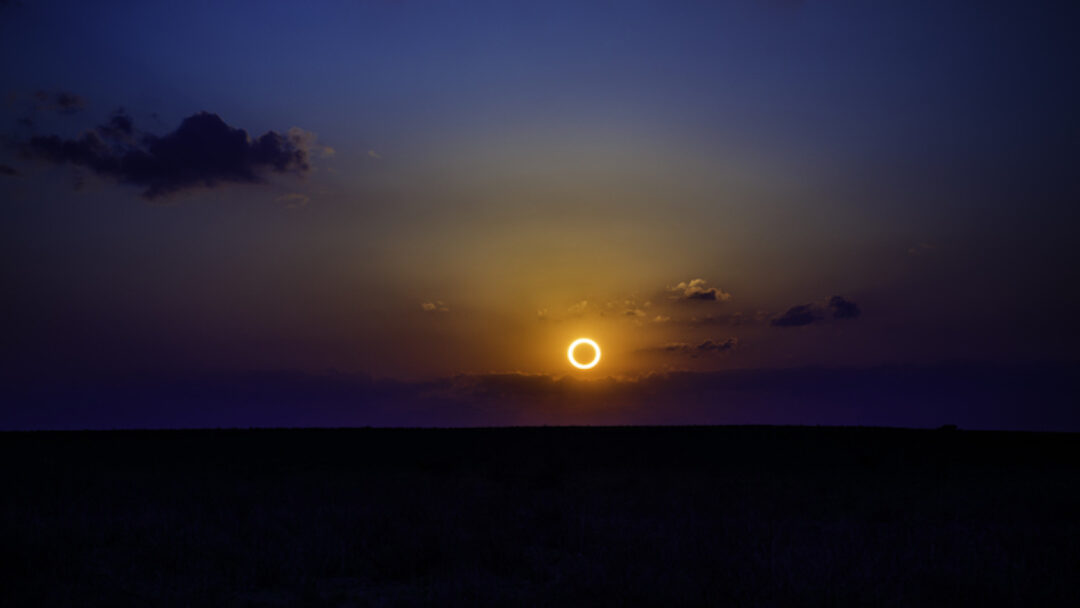As the April Eclipse approaches, excitement builds among skywatchers and astronomy enthusiasts. This celestial event offers a rare opportunity to witness the wonders of our universe firsthand. However, it is important to remember that observing an eclipse requires caution and proper safety measures. In this article, we will guide you through essential tips to ensure a safe and spectacular viewing experience during the April Eclipse.
On Monday, April 8, 2024, a total solar eclipse will cross North America, passing over Mexico, the United States, and Canada. The total solar eclipse will begin over the South Pacific Ocean. Weather permitting, the first location in continental North America that will experience totality is Mexico’s Pacific coast at around 11:07 a.m. PDT.
Arizona Science Center will be opening early to allow guests to view the event at 9:00 a.m. The partial solar eclipse begins at 10:08 a.m., hits its maximum at 11:20 a.m. and ends at 12:35 p.m. Phoenix will receive 64% coverage.
Understanding the Dangers of Viewing an Eclipse
While an eclipse may seem like a captivating visual spectacle, it is crucial to recognize the potential dangers associated with viewing it without proper protection. The sun’s powerful rays can cause severe damage to your eyes, leading to permanent vision loss. Staring directly at the sun during an eclipse, even for a few seconds, can result in solar retinopathy, a condition where the sun’s rays burn the sensitive tissues at the back of your eyes.
To safeguard your eyes, never attempt to observe an eclipse without taking necessary precautions. Even during a partial eclipse, when the moon only partially covers the sun, the intensity of the sun’s rays can still cause harm. It is essential to prioritize your eye safety and follow the guidelines provided by experts and professional organizations.
Safety Precautions for Viewing an Eclipse
When it comes to viewing an eclipse, safety should always be your top priority. Here are some essential safety precautions to keep in mind:
- Use Certified Solar Viewing Glasses: Invest in a pair of certified solar viewing glasses that meet the international safety standard ISO 12312-2. These specialized glasses block harmful ultraviolet and infrared radiation while allowing you to see the eclipse clearly. Avoid using regular sunglasses, homemade filters, or unverified glasses, as they may not provide adequate protection.
- Beware of Counterfeit Glasses: Unfortunately, counterfeit solar viewing glasses have flooded the market, posing a significant risk to unsuspecting individuals. To ensure your safety, purchase glasses from reputable vendors or directly from trusted astronomical organizations. Look for the ISO certification logo and verify the authenticity of the glasses before using them.
- Properly Inspect Your Glasses: Before using your solar viewing glasses, carefully inspect them for any scratches, holes, or damages. Even the slightest imperfection can compromise the integrity of the glasses, rendering them ineffective. If you notice any defects, replace your glasses immediately.
Choosing the Right Eye Protection for the Eclipse
When it comes to protecting your eyes during an eclipse, not all eye protection options are created equal. Here are some alternatives to consider:
- Solar Filters for Telescopes and Binoculars: If you plan to observe the eclipse through a telescope or binoculars, never look through the lenses without proper solar filters. These filters are specifically designed to block harmful solar radiation, allowing you to view the eclipse safely. Consult with a reputable astronomical equipment provider to ensure you select the appropriate solar filters for your specific device.
- Pinhole Projection Method: If you do not have access to certified solar viewing glasses or solar filters, you can still experience the eclipse indirectly through the pinhole projection method. Simply create a small pinhole in a piece of cardboard and project the image of the partially eclipsed sun onto a surface, such as another piece of cardboard or the ground. This method allows you to witness the eclipse without directly looking at the sun.
- Live Stream and Broadcasts: In the age of technology, you can also experience the eclipse from the comfort of your own home through live streams and broadcasts. Numerous organizations and educational institutions provide real-time coverage of eclipses, allowing you to witness the event safely. Check online platforms, such as NASA’s official website or reputable astronomy channels, for live streaming options.
Tips for Photographing the Eclipse Safely
Capturing stunning photographs of an eclipse can be a rewarding experience. However, it is crucial to prioritize your safety while attempting to photograph this celestial event. Here are some tips to ensure both your safety and the quality of your photographs:
- Use a Solar Filter: Just as you need eye protection, your camera lens also requires a solar filter to capture the eclipse without damaging the equipment. Attach a certified solar filter to your camera lens to block harmful solar radiation while allowing you to capture the beauty of the eclipse.
- Adjust Your Camera Settings: To photograph the eclipse effectively, adjust your camera settings accordingly. Use a low ISO setting to minimize noise, select a fast shutter speed to capture crisp images, and set a small aperture for increased depth of field. Experiment with different exposure settings to achieve the desired effect.
- Practice before the Eclipse: Familiarize yourself with your camera and its settings before the eclipse day. Practice taking photographs of the sun to understand how your camera performs under challenging lighting conditions. This preparation will help you capture better images during the actual event.
Planning Your Eclipse Viewing Location
Selecting the right viewing location is paramount to enjoying the April Eclipse to its fullest. Here are some factors to consider when planning your eclipse viewing location:
- Accessibility: Choose a location that is easily accessible and allows you to set up your viewing equipment comfortably. Consider the distance you need to travel, parking availability, and the ease of transporting your equipment.
- Clear Skies: Opt for a location with a high chance of clear skies on the day of the eclipse. Avoid areas prone to cloud cover or heavy pollution, as they may hinder your visibility of the celestial event. Consult weather forecasts and astronomical organizations for guidance on finding clear sky locations.
- Safety and Comfort: Ensure that the location you choose provides a safe and comfortable environment for you and your fellow viewers. Avoid crowded areas where it may be challenging to maintain social distancing. Additionally, come prepared with essentials such as water, snacks, and appropriate clothing to ensure your comfort throughout the duration of the eclipse.
Alternative Ways to Experience the Eclipse
If you are unable to witness the April Eclipse directly or prefer alternative ways to experience this celestial phenomenon, here are some options to consider:
- Virtual Reality (VR) Experiences: Virtual reality technology allows you to immerse yourself in a realistic simulation of an eclipse. With a VR headset, you can experience the eclipse as if you were there in person, all from the comfort of your own home. Explore various virtual reality platforms that offer eclipse simulations for an unforgettable experience.
- Planetariums and Science Centers: Visit a local planetarium or science center that offers educational programs and exhibits on eclipses. These institutions often have state-of-the-art equipment and knowledgeable staff who can guide you through a comprehensive understanding of this celestial event.
- Educational Books and Documentaries: Expand your knowledge about eclipses through educational books and documentaries. These resources provide valuable insights into the science and history behind eclipses, allowing you to gain a deeper appreciation for these extraordinary phenomena.
Common Myths and Misconceptions about Eclipses
Eclipses have captivated humans for centuries, leading to the development of various myths and misconceptions. Let’s debunk some common misconceptions surrounding eclipses:
- Pregnant Women Should Not Observe Eclipses: This myth suggests that pregnant women should avoid witnessing an eclipse as it may negatively impact the unborn baby. However, there is no scientific evidence to support this claim. Pregnant women can safely observe an eclipse by following the necessary safety precautions, just like any other individual.
- Animals Behave Strangely during an Eclipse: It is often believed that animals exhibit unusual behavior during an eclipse, such as becoming restless or confused. While some animals may display minor changes in behavior due to the temporary darkness, there is no evidence to suggest that eclipses significantly affect animal behavior.
- Eclipses Are Bad Omens: Throughout history, eclipses have been associated with various superstitions and considered bad omens. However, eclipses are natural phenomena that occur predictably due to the alignment of celestial bodies. They hold no inherent positive or negative significance and should be appreciated for their scientific and astronomical value.
Resources for Further Information and Updates on the April Eclipse
Stay informed and up-to-date on the April Eclipse by utilizing reliable resources. Here are some recommended sources for further information:
- NASA’s Official Website: Visit NASA’s dedicated webpage for comprehensive information, live coverage, and updates on the April Eclipse.
- Astronomical Organizations: Consult reputable astronomical organizations such as the International Astronomical Union (IAU) or the American Astronomical Society (AAS) for reliable information and resources.
- Local Science Centers and Planetariums: Reach out to local science centers and planetariums for events, educational programs, and expert guidance on observing the April Eclipse.
As the April Eclipse approaches, it is crucial to prioritize your safety and protect your eyes while enjoying this celestial event. Use certified solar viewing glasses, follow safety precautions, and consider alternative ways to experience the eclipse if direct observation is not possible. Plan your viewing location carefully, and by following these essential tips, you can ensure a safe and spectacular viewing experience during the April Eclipse.
Click here to learn more about the eclipse.








